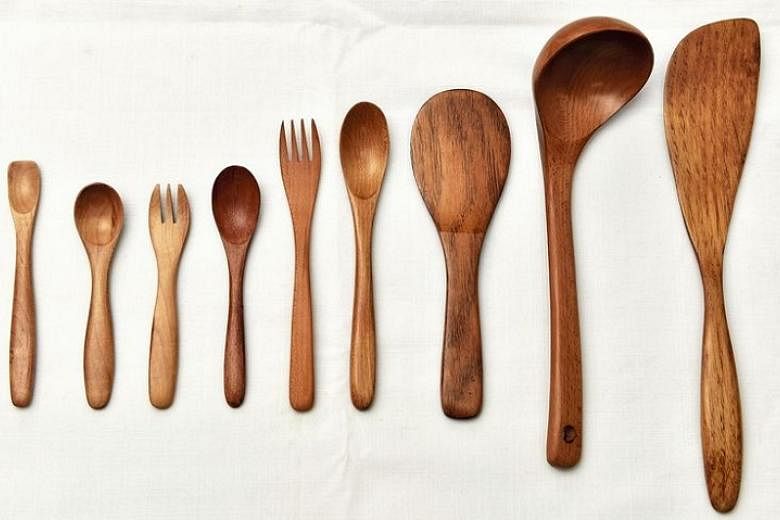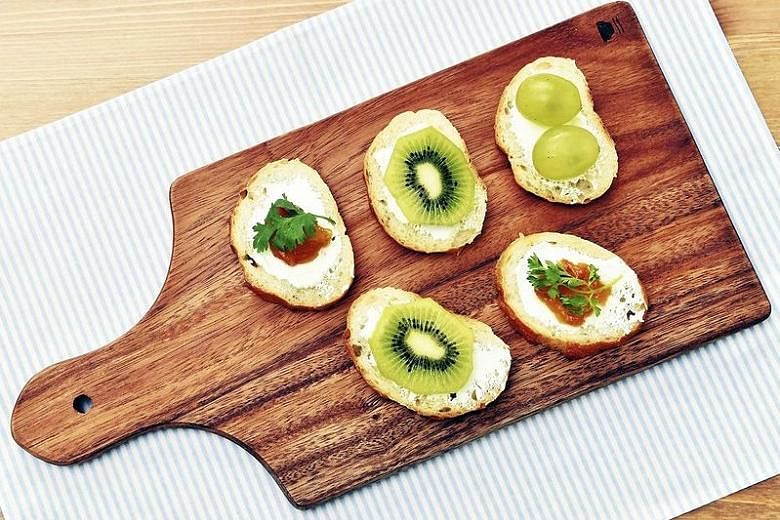(THE JAPAN NEWS/ASIA NEWS NETWORK) - Wooden tableware, both light and sturdy, is once again attracting attention.
The unique grain and texture of the wood projects a sense of warmth in the ware and can make whatever food it contains look even more appealing.
Just putting your wooden tableware on a regular table can suddenly transform the space into a trendy cafe.
Wooden dishes and utensils have been used worldwide. In particular, Japan, blessed with forests, has cultivated a culture of creating and cherishing items made of wood, said Mr Hideki Tanaka, an executive of Tomato Batake, a manufacturer of wooden tableware in Yokohama that his father established.
"However, the rise of cheap chinaware, which can be mass-produced, led to fewer people using such items," he said.
A turning point came in the 2000s, which saw a rise in trendy cafes and organic food. Wooden plates and other tableware were used more often, casting a fresh spotlight on its value.
"The boom helped establish the image of woodenware as environment-friendly," said Mr Tanaka. "Compared with ceramics, it doesn't cool the food it contains as quickly, and this is suitable for cafes, as many visitors stay longer there."
Wooden tableware attracted interest as concern over food safety grew in recent years, according to the expert.
"After the Great East Japan Earthquake in 2011, young women and mothers of small children became more interested in using tableware that they knew was absolutely safe, just like safe food," he said.
In producing wooden tableware, timber is first carved into a rough shape and boiled for disinfection. After being dried, the material is given its final shape on a lathe. Lacquer and oil are applied to the surface as a finishing touch.
Tomato Batake uses natural wood and lacquer free of artificial chemicals for its products and its craftsmen make each item by hand.
The manufacturer's line-up includes a set with a plate and two bowls. The product, made from the wood of the jujube tree, is inspired by the dinnerware of Zen monks. It is easy for young users to handle as the three items neatly fit into one another, helping children to learn the practice of clearing the table.
As long as it is given proper care, such as being lacquered again, the set can last for more than 20 years, meaning the children can still use it when they become adults. The bowls' dimensions are such that they may be used with any cuisine.
Users should pay careful attention when handling woodenware - it does not do well in suddenly dry or humid surroundings, which may cause it to warp or crack.
These items should not be put in a microwave, refrigerator or dishwasher. Do not bleach them or leave them soaking in water before washing. Woodenware can last for a long time as long as you use a mild dishwashing soap and a soft sponge, wipe water from the surface immediately and leave it to air dry.
Wooden materials used to produce these items have their own growth rings and differences in colour, along with knots and stains.
"No two pieces of wooden tableware are alike," said Mr Tanaka. "That means you can enjoy choosing your own favourite piece."
The applied lacquer looks dark brown at first, but as time passes, it grows light enough to allow the beauty of the wood grain to shine through, he added.
Make your own spoon
Want to try your hand at making your own woodenware? A line-up of make-your-own-spoon kits is available.
Offered by Amber, a furniture shop in Fukuoka Prefecture, each set includes materials needed to make a spoon, such as wood, sandpaper, oil and cloth. The wood comes in four types. Kits start 648 yen (S$7.80). Some kits contain spoons that are cut out of a block. You can work on the details of the spoon using a chisel or small knife, sandpaper it and apply oil with the cloth.
Go to www.nexyzbb.ne.jp/~amber for details.




